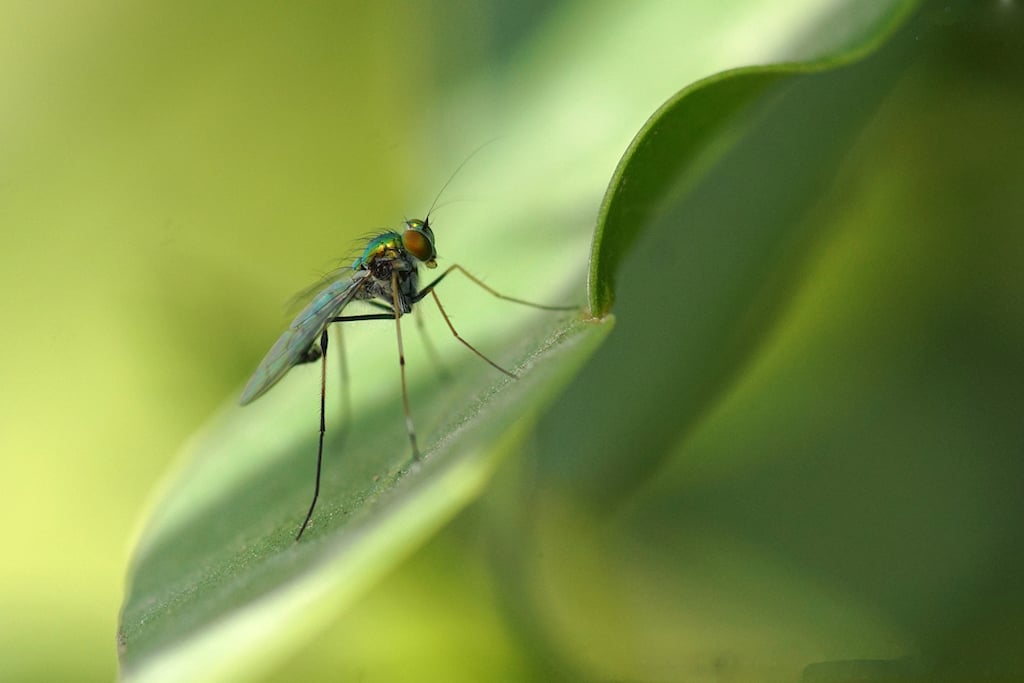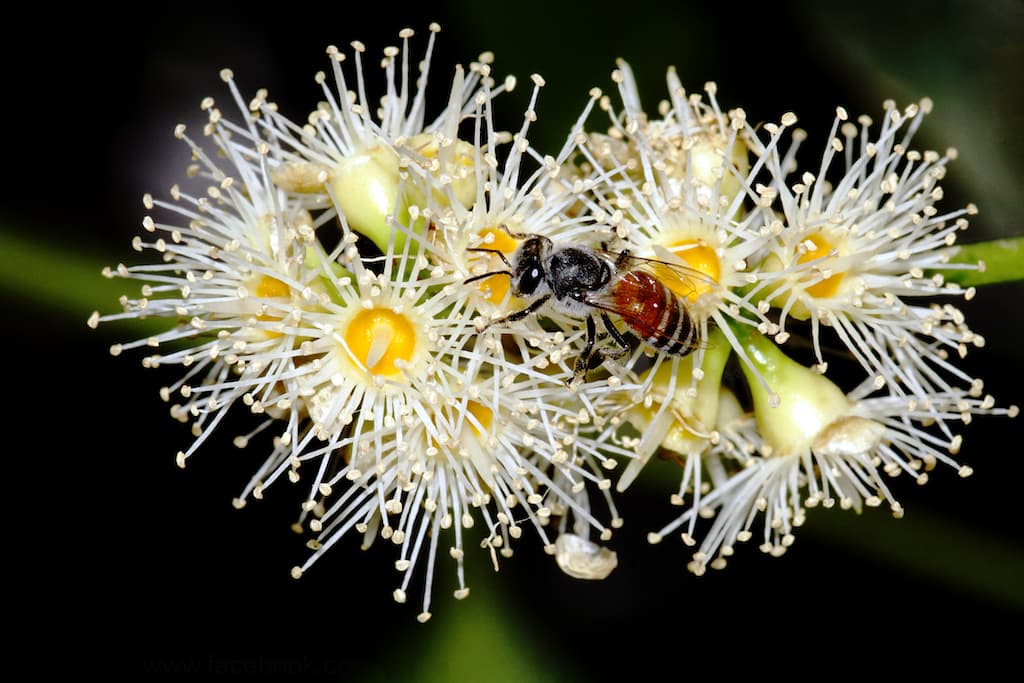For 45-year old Nusrat Ali, the lockdown could not have come at a better time. It has opened a whole new world — that of the insects.
A keen birder with an “interest in gardening, wildlife and reading” which gelled perfectly with his love for photography, these long hours of being home has given him an opportunity to focus and try out his newly acquired macro photography equipment and skills onto the creepy crawlies.
And the results were amazing.

“For the very first time, I noticed how spectacular were their colours and how intricate their forms,” said the 45-year old salesperson in a media outlet.
But macro is not an easy style of photography, he said. “There are too many variables involved. The one aspect which differentiates it from wildlife photography is the technical know-how.”

Unlike bird-watching and photographing birds which required going outdoors, with insects, Ali just had to walk up to his backyard. “It is a perfect pastime during the time of social distancing,” he said, finding beauty in the mundane.
Falling in love with the wonderful world of bugs
“I learnt so much about these invertebrates, their liking for certain flowers, their habits, the way the importance of wind and breeze to be able to pollinate, their importance in the food cycle and especially for us humans,” he said, adding: “My backyard suddenly became my classroom back in school days except this was a whole more fun way of learning.”

According to Ali, the best part of doing insect photography is that you have options and can practically be done anywhere.
“You can do it in the woods, a swamp, a stream or a field; you can photograph insects while you are bird-watching and biding your time. But you can also do it from your balcony, with a single pot in your home, or a room’s window.”
While bird watching had taught him patience, photographing insects requires a much heavier dose of patience, said Ali because insects can be skittery and jumpy.
“Being impatient will only chase them away.”
“And while there are good days, there can also be two hours of waiting with not a single “decent click.”

However, he said, pursuing this bobby during the lockdown has been a humbling experience and gave him time to reflect on why it was important not to cross certain limits when it came to nature.
“Human beings must not cross the line as they may lose nature’s balance!”
Quite satisfied with the results so far, photography, like any other hobby, he said “is a self-indulging one” which provides the photographer to not only do what they want but also to share information and knowledge through their photos.

He looks up masterpieces on photo-sharing sites and said he was indebted to a few seasoned photographers from whom he learnt the basics of photography.
These include professional photographers like Israr Shah and Rizwan Bhiriya and two others “serious hobby photographers” namely Muhammad Junaid and Dr Iftikhar Ahmed in the USA.
Scientists warn of an insectageddon
Scientists today are saying many insects face an existential threat with the extinction of an estimated one-quarter of species. Everything interlaced with everything else, this could mean the collapse of other habitats and could be catastrophic.
Man has still to unravel the mystery of the entire animal and plant species on earth. But of the ones it has assessed and has knowledge of (and which is just the tip of the iceberg) 25% or one million are already facing extinction and that too within a few decades.
Of these, half are insects that fly, crawl, jump and walk on water and land.
And it is us humans that are to blame for this loss.

A group of scientists have sent warning bells to humankind. The main drivers, they say are habitat loss (both land and aquatic), degradation of biodiversity (causing poor nutrition), pollution, intensive use of pesticides and fertilisers, invasive species introductions, climate change, overexploitation (some insects are harvested for decoration, used as pets) and entomophagy — the eating of insects.
According to the first global assessment on ecosystem and biodiversity by the Intergovernmental Science-Policy Platform on Biodiversity and Ecosystem Services (IPBES), (of which Pakistan is a member) the world’s wetlands have been reduced by 87 percent while coral reefs have declined by 50 percent.
Unfortunately, insects seem to suffer from a bad rap, acknowledged Tofiq Pasha, a Karachi-based environmentalist.
“We have broken the food chain. The unregulated and extensive use of broad-spectrum chemicals has meant we have killed all kinds of pests and disturbed the natural balance,” he pointed out.
Extinction is a rare phenomenon, but if it were to happen, Riaz Mahmood, former biological control specialist, at the Centre for Agriculture and Bioscience International, that looks into entomology, said, “it will mean the natural balance has been disturbed”.
This may lead to the population explosion of a species that get free from population regulating biocontrol agents (parasites /predators), he warned.

To fix the harm, Pasha said: “We have to start fixing the trees, the plants and the water bodies so that the environment starts breeding its lost species.”
To understand the phenomenon, Microsoft is coming up with a what it calls a “Planetary Computer” for assessing, monitoring and managing natural ecosystems data. Even Google and Amazon have been working on something similar but on a smaller scale than Microsoft.
One way of damage control would be to “stop spraying the deadly poison” as it goes into the air, water and our soil, said Mahmood. Pakistan, he said, was considered the second-largest pesticide consumer in Asia.
Instead, he said, try what Pasha is doing to his chilli crop.
“On that patch, we grow marigold. When the chilli plant flowers it attract insects and that, in turn, attract birds. The latter will eat the insects and the chillies remain protected.”
Mahmood, a member of the Pakistan Entomological Society, explained the importance of “biological control” which Pasha was practising to protect his chilli crop.
The insect’s natural enemies were best to control their “harmful effects” but he lamented there was little effort made in Pakistan be it unrestrained use of chemicals to fight dengue or the more recent locust swarms which could have been controlled through birds that prey on them.
“Along with lack of awareness, we like to take short-cuts,” said Mahmood who is currently helping CABI in controlling 12 serious insect pests in five crops (cotton, okra, sugarcane mango, and guava) in five districts of Sindh ( Thatta, Sanghar, Tando Allah Yar, MirPur Khas and Larkana).

In today’s climate-changing world, said the insect expert, it was important to exploit the natural enemies practising the concept of integrated pest management. “If climate change will impact harmful insect, the useful insects will suffer mortality too because their life is dependent on those harmful insects,” he warned.
In addition, said Pasha, it would help to stop calling insects, pests. “We really should look at them and reassess our relationship with them and how they help make our food,” he said. He staunchly believed everything on earth, even a stone “dead as it may seem to you” lying there has a purpose. “It is a cog in the evolution of this planet,” he said.
And said Ali, there is time still. “We must learn to respect their workplace” and make it “healthy and secure” if we want to continue reaping the benefits.
